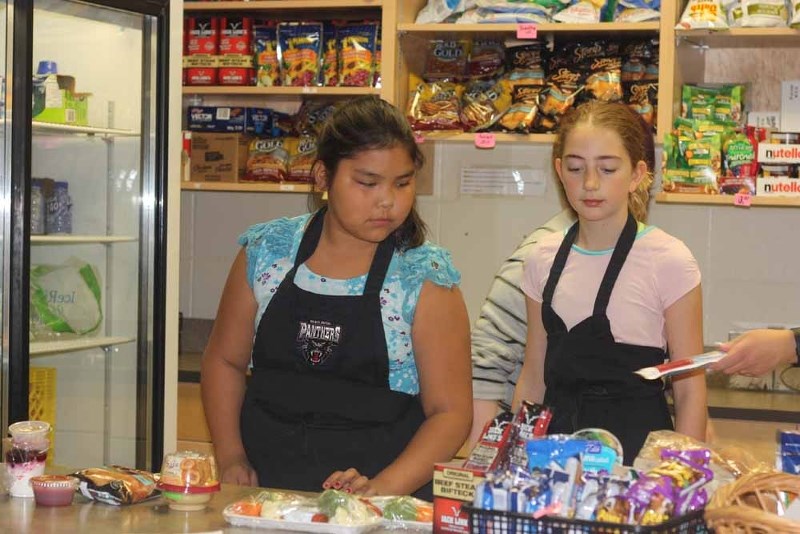The snack bar items at Glen Avon School seem, at first glance, to be the same type of foods you’d find at any concession. But a closer look reveals that the bags of chips are actually baked chips or pita chips, and the bars are protein or fibre bars. Yogurt parfaits, fresh fruits and salads line the countertops, and there is always a daily option of soup, stew or chili.
“We know that from the research out there, good nutrition is the starting point,” said school principal Kandy Songer, adding that in the past, if the kids weren’t choosing nutritious items, for instance, by eating pop or chips for snacks, teachers found that reflected in their classroom behavior.
Since September of this year, the school has started with what Peggy Fedoruk, the school’s coordinator of student supports, called a “clean slate,” removing its soda vending machines and former snack options like ice cream and fried chips.
The school now has two vending machines offering milk, water, sparkling waters and a host of the same kind of healthy snacks that are also available at the snack bar.
“Milk is selling at an all time high to our junior high,” said Fedoruk, adding that the snack vending machine is emptied and students have to re-stock it every day. “They are making, really, healthier choices and requesting it.”
The road to offering healthier choices is not necessarily straightforward, with the pushback potentially including resistance from students and the loss of profits from snacks and vending machine sales.
Bailey Lang, a Grade 7 student school, described the transition phase as “awkward.” This past spring, the school started offering an array of food options, but Songer said the real turning point was when the school removed all the unhealthy snack items.
“It changed and everybody was sad,” says Bailey, noting for a while, the snack bar didn’t seem to be doing business as briskly as it once did. But the demand crept up, and now, she and the other students that man the snack bar say it seems as busy as ever.
The Second Harvest project brings in free items, like fruit and salads that are available for free to the students, and these are proving to be popular, students and staff agree.
“Sometimes we have free salads and those go by really fast,” says Bailey.
When options like vegetable platters are sold, they are offered at a cost as reasonable as is possible, said Fedoruk, to encourage kids to choose to buy them. The point is not to make money, but to be true to what the school teaches kids about nutrition and eating properly, she said.
“It kind of changed our focus from the snack bar as a way to make money to the snack bar as a way to make healthy choices,” agreed Songer, adding that the school still may have less healthy treats available at times like during this past Halloween, but would like to reinforce the idea that treats should be had once in a while “in moderation.”
For her part, Bailey says she’s happy with the new options.
“It’s good because before it was all stuff with sugar and salt. There was nothing really healthy – well, there was very little,” she says, adding she welcomed the change.
“I find it more appetizing,” she said, noting that foods like chips or drumsticks get “chowed down” rather than savoured. “Now you can really enjoy it.”



